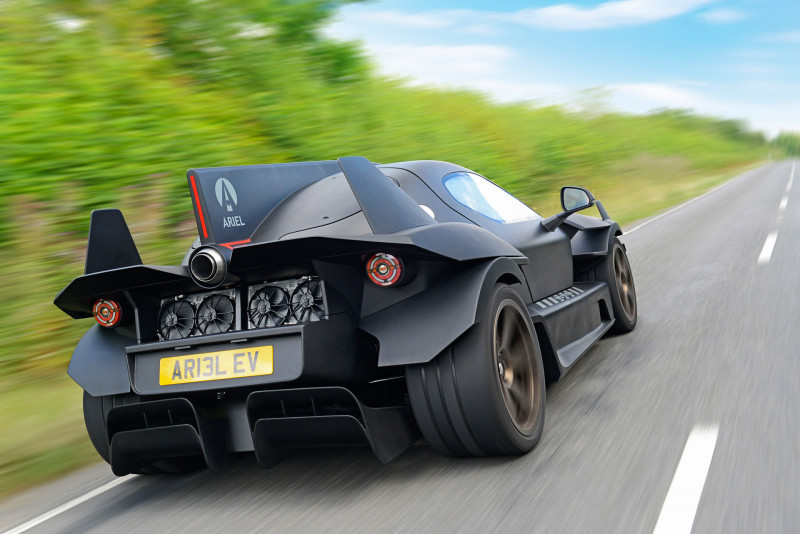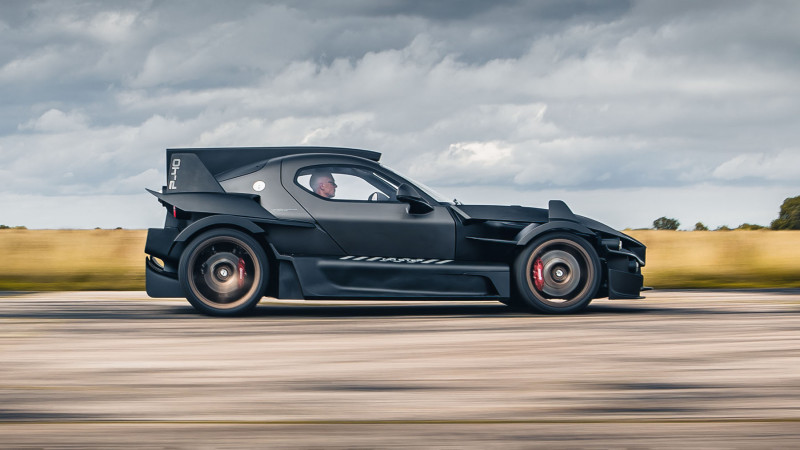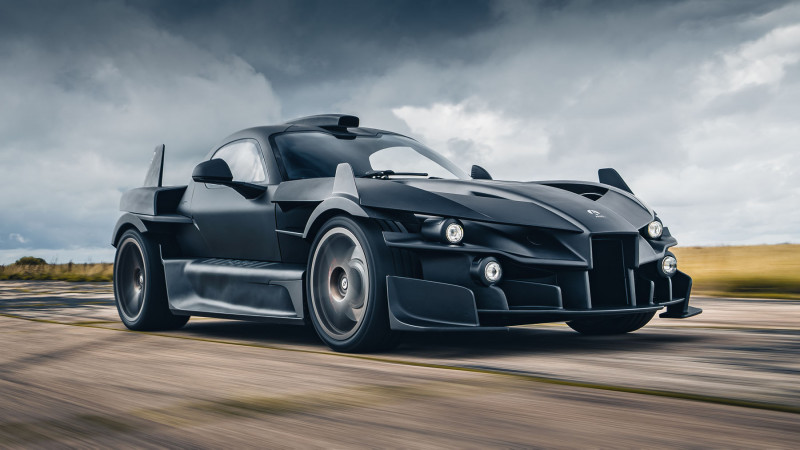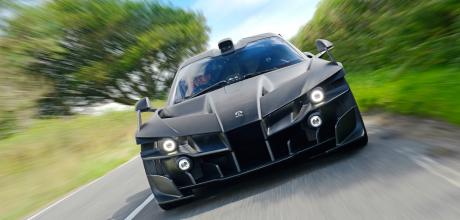2023 Ariel Hipercar EV 1180bhp monster
Ariel’s Hipercar EV is here, with 1180bhp, a turbine range-extender and ‘unconventional’ styling.
Electric shock
On seeing the Ariel Hipercar for the first time, one wag suggested it showed why the Somerset company hadn’t bothered with bodywork on its previous models. Conventional it is not. Something a ten-year-old would draw in their maths book when dreaming of Batman’s next car it might be. As the marketing types say, it started the conversation.

It also distracted a little from what is beneath the Hipercar’s carbonfibre body, namely the work of a long-standing, tireless project Ariel has been at the centre of since 2017 (see evo 298) and which has now made its debut. ‘Hipercar’ – which stands for HIgh PERformance CArbon Reduction – is the result of a number of British-based firms, including the likes of Cosworth Engineering, collaborating to design and develop an electric sports car. There’s a 590bhp rear-wheel-drive version weighing 1445kg, while a full-fat 1180bhp four-wheeldrive derivative tips the scales at 1546kg. Power comes from two or four 295bhp electric motors, one at each driven wheel. Each motor unit weighs 57kg and has a single-speed step-down gearbox within it, with helical-cut gears and asymmetric tooth profiles to cut transmission losses. Total torque is 664lb ft with two motors or 1180lb ft with four.

Power is provided by a Cosworth 62.2kWh lithium-ion battery pack, producing a maximum of 800 volts with a nominal 690 volts available. Nearly 6000 cells fill the 32 modules to create high-power-density cells that can draw up to 1450 amps. A liquid cooling system has also been patented to manage the Hipercar’s battery temperature during track use. This feeds refrigerated – or heated – water-glycol coolant directly to every cell pack, monitored by sensors.

Cosworth also developed the optional microturbine range extender that can charge the battery on the go. Powered by a catalytic exothermic reaction, the range extender runs at a fixed 120,000rpm and generates a continuous 35kW of power when required. Weighing less than 50kg, the unit independently monitors the battery’s state of charge, operating as and when required. It has been designed to run on a variety of fuels, including regular pump, synthetic and racing fuels.
A bonded aluminium tub makes up the chassis, which is laser cut and CNC folded with removable front and rear subframes. Within this sits the sealed battery pack, itself wrapped in a ‘HyLight’ multimaterial casing. Aluminium unequal length double wishbones are fitted at each corner, the anti-roll bars are adjustable and Bilstein has supplied the adaptive dampers (adjustable for compression and rebound). The steering is power assisted. Michelin’s Cup 2 tyres will be standard, measuring 265/35x20 front, 325/30x21 rear, with the Cup 2 R an option. The 9 and 12.5-inch wide wheels are forged.
The carbon body features forward-opening power-assisted butterfly doors. Working with TotalSim, the body and floor have been optimised for aerodynamics, with those striking fins on the front wings reducing drag on the mirrors, the roof scoop supplying air to the range extender, and the fins on the rear aiding high-speed stability. Top speed is 155mph, 0-60mph takes 2.09sec and 0-100mph 4.42sec, since you ask, with a 150-mile WLTP electriconly range that Ariel claims is good for 20 minutes of track driving. The price? Under £1million…
Above and top: Hipercar’s striking carbonfibre body covers a two-seater cockpit based around a bonded aluminium tub; pictured car is a fully operational prototype, while low-volume production is planned.


